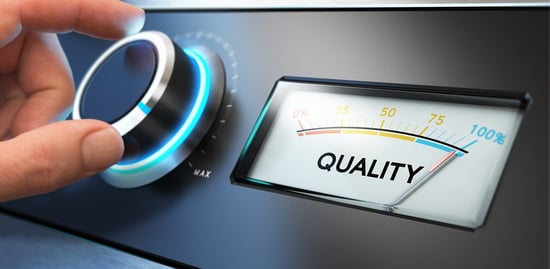When any facility’s cleanroom is originally designed, experts evaluate many variables related to operations, specified parameters, and protocols to maintain cleanliness standards unique to that environment. Over time, inevitable changes to cleanroom layout, equipment, processes and operators can affect these parameters – and compliance with cleanliness standards – if the design is not re-evaluated as the process in the cleanroom evolves.
What Changes Impact Design And Cleanliness?
The changes since the original design and construction of your cleanroom that can affect cleanliness include:
- Cleanroom size and layout
- Cleanroom floor, wall or ceiling surfaces
- Equipment or tooling added, replaced or relocated
- Workstations added or relocated
- New wet or dry processes
- Solvents, lubricants, adhesives, cleaning agents or other chemicals introduced or changed
- Introducing new cleanroom gloves, wipers or other products used in the environment
- Cleanroom operator staffing levels/shift changes
Why Are These Changes Important To Cleanliness?
Let’s look at several important parameters and how they are affected by changes to cleanroom layout, equipment, processes and operators:
-
Airflow, filtration, and purification:
Has your cleanroom size or floor space been modified, equipment added or relocated, or operators added since the original design? If yes, then airflow, filtration and purification demands need to be re-evaluated to maintain optimal HVAC and HEPA performance to maintain the standards the space was certified to. Something as minimal as moving workstations can disrupt air flow and impact cleanliness levels drastically.
-
Heat and humidity:
New equipment, new wet or dry processes, or additional operators can change cleanroom temperature and humidity. Higher temperatures and lower humidity can increase skin cell shedding and the risk for electrostatic discharge (ESD). Temperature and humidity should be monitored and HVAC systems adjusted to maintain levels within specified parameters. -
Particulates and contaminants:
The potential risk of particulates and contaminants increases with changes to wet and dry processes and the use of new or different chemicals such as solvents, adhesives, lubricants and cleaning agents. Another source of particulates is relocating equipment that generates particulates from its original location to a new location in a more critical area. Also, changing cleanroom products, including gloves, wipers, booties and apparel, can introduce particulates and contaminants if the new products contain different substrates or materials than originally specified.
What if your cleanroom consumable supplier substitutes products? Read what actions should be taken.
-
ESD:
As noted above, the risk of ESD increases with higher temperatures and lower humidity. Temperatures increase with more heat generated from new equipment or more operators. Changes to cleanroom surfaces, processes and equipment may generate more static than the cleanroom did in it’s original state. ESD presents multiple risks depending on the environment—if an operator or piece of equipment is statically “charged,” they are attracting a disproportionate amount of particle contaminants to their surface. In addition to this cleanliness risk, some products are sensitive to ESD and a static “shock” can impact product quality.
Being Proactive Now Prevents Costly Failures In The Future
A vulnerable position for any organization is to continue the practice of “it’s always been this way”; however, complacency is not a successful strategy to reduce risk in an evolving manufacturing environment. This applies to cleanroom design too.
Developing a list of cleanroom modifications from cleanroom gloves to equipment to layout and then evaluating their impact on the original design and parameters is a proactive approach to reducing risk, increasing yield, and maintaining compliance. Evaluating and updating your cleanroom’s layout to maintain cleanliness levels on an ongoing basis is just as important as the initial design and construction.
Recognize Your Cleanroom Is Dynamic For The Best Outcome
Your cleanroom was originally engineered for the best outcome given the variables at that time. Cleanrooms change and grow with new equipment, processes and staffing. As a best practice, if your equipment or processes have changed, your design and specifications should be reviewed and evaluated to continue achieving best outcomes.
Explore More Resources
Best Practices: Designing a Gowning Room for Cleanroom Environments [Blog]

Valutek
Valutek is one of the first and few manufacturers to offer a full product portfolio of best-in-class cleanroom products. Since 1988, our controlled environment consumables are helping leading organizations operate their cleanrooms in a consistently stable state.
Related Articles
- Valutek

- 11 May 2023
Why Repeatable, Standardized Testing is Important for Cleanroom Products
Companies establish cleanroom operating procedures based on internationally accepted standards to...
- Valutek

- 30 May 2024
Endotoxins: Strategies for Control in Life Science Environments
Medical device and parenteral pharmaceutical manufacturers are increasingly concerned with...
- Valutek

- 6 February 2024
Mastering Cleanroom Maintenance: The Art and Science of Using Wipers
Cleanrooms demand meticulous attention to detail to maintain cleanliness standards, as sub-micron...


